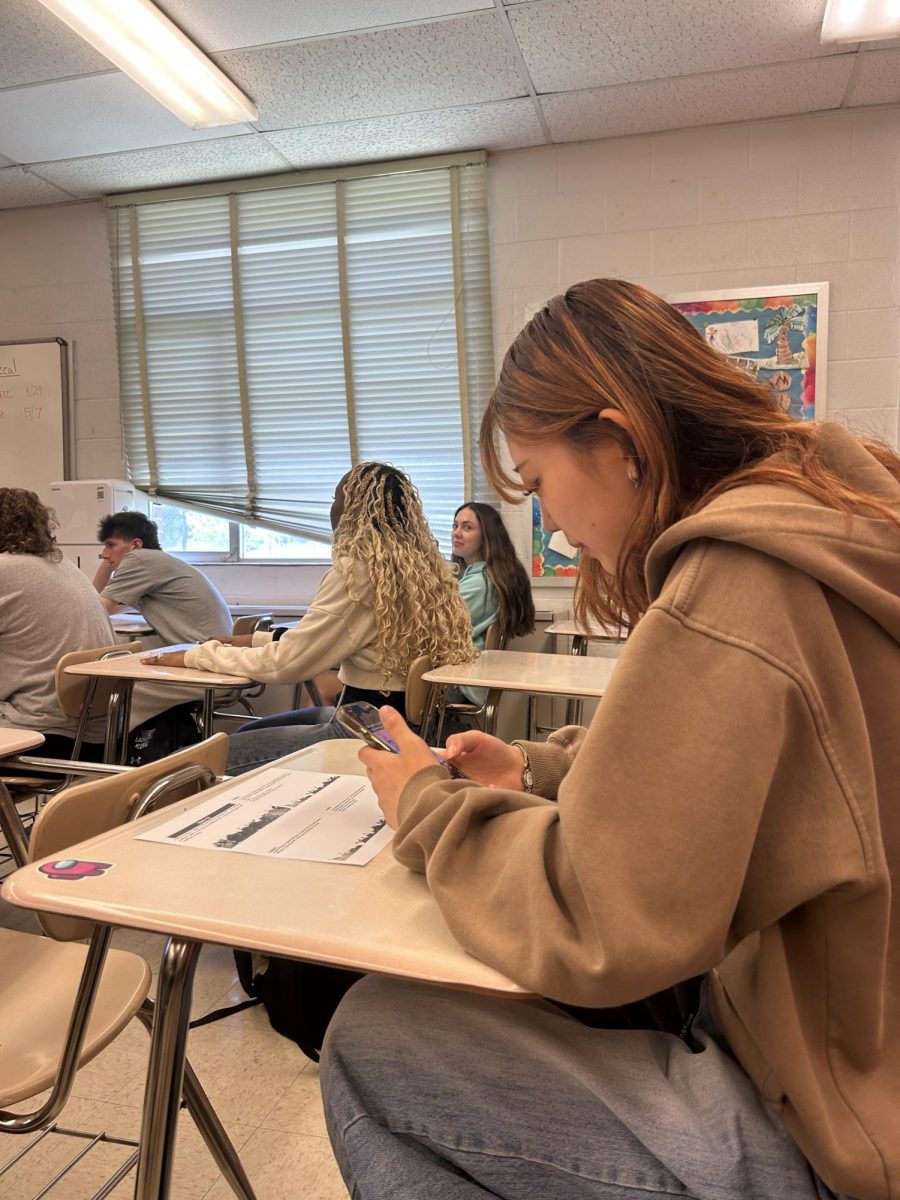Chromebooks and electronic Smart Boards have become necessities for teaching almost every lesson in classrooms. Nowadays, assignments are completed online, notes are typed on electronic documents and students’ eyes are exposed to multiple hours of blue light from Monday to Friday.
Teachers should notice the unhealthy effects of technology on students and reduce its use when giving lessons.
A supporter of the use of technology in classrooms may claim that completing assignments online can be more efficient for students because typing is more convenient than using a pencil and paper to do work. Students are well adapted to technology and may be familiar with using a keyboard to type out their thoughts.
However, students easily get carried away on their Chromebooks or personal laptops and find themselves playing games or being distracted by a notification during essential class time, where a majority of class work could be completed before leaving the classroom. The use of technology in a classroom makes it difficult for students to focus, causing them to miss important instructions given by the teacher or making their homework pile bigger since they didn’t complete work during the class period.
Supporters of technology in classrooms may also argue that online assignments are superior to paper assignments; it is rare for a computer to lose an online homework document. Students won’t be able to use petty excuses such as leaving their homework at home or claiming their dog ate it.
While technology in education poses a good way to hold students accountable, it tends to act up and causes more problems than good. When it’s test day in a class and the test is on a platform like Canvas, students begin to realize their Chromebooks are about to die or are already out of battery. When this scenario comes up, students scramble to find their charger or borrow one from a classmate, the teacher or the library, and need to take time out to find a new place to sit where there is an outlet. Instead of using valuable time working on their test, students work on charging their computers. If more tests were on paper, all students would immediately be able to begin working at the same time.
Additionally, the use of electronic devices in the classroom incentivizes less interaction among students. It becomes easier to hide behind a screen since all classwork answers can easily be found on the internet or by using AI.
Those in favor of technology’s consistent and present role in classrooms may claim that giving students group projects can be an easy strategy to get them interacting and communicating with one another, creating a sense of community. However, a majority of group projects are done online, so a majority of the work is done independently at home, with the only communication among group members being through a screen.
Those who are against the prevalent role of technology in classrooms and those in favor of it can easily solve this problem by meeting in the middle. In this day and age, it is difficult to avoid using technology in classrooms since humans are so inclined to use it as a resource. However, reducing its prominent role in education by periodically giving out paper assignments, forcing students to put away their computers or even using a whiteboard to teach won’t hurt one bit.







![The 2025-2026 Editorial Board Alex Grainger, Cameron Cowen, Helen Manolis, Emory Scofield, Ahmed Ibrahim, Rebekah Buchman, Marley Hoffman, Hayley Gottesman, Pragna Pothakamuri and Natalie Pak (Chase Dolan not pictured) respond to the new MCPS grading policy. “When something that used to be easy suddenly becomes harder, it can turn [students’] mindset negative, whereas making something easier usually has a better impact. I think that’s where a lot of the pushback comes from. But if you put emotions aside, I do think this change could help build stronger work ethic,” Ibrahim said.](https://woottoncommonsense.com/wp-content/uploads/2025/09/fqr5bskTXpn0LRQMmKErLuNKdQYBlL726cFXBaWF-1200x900.jpg)
